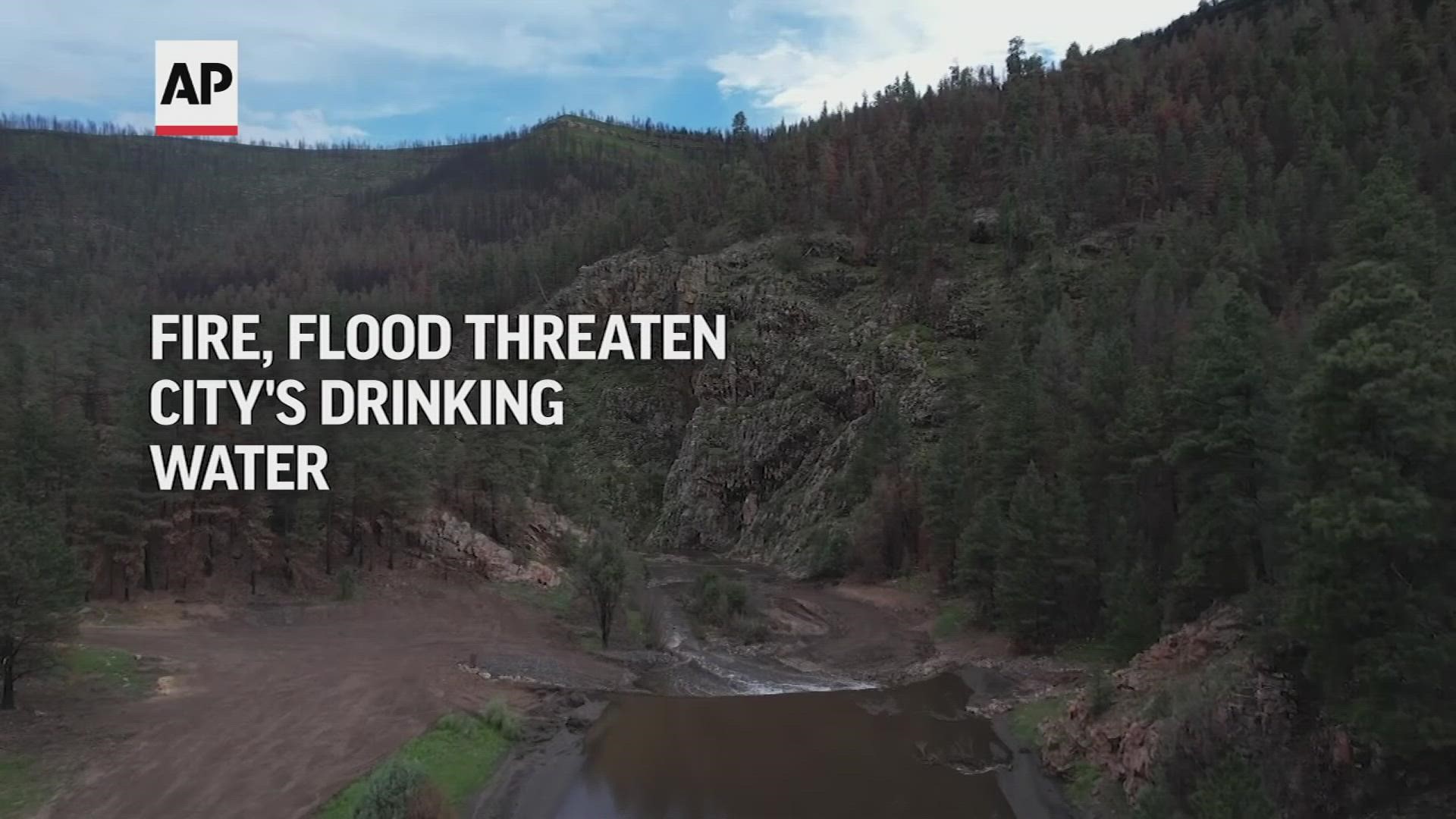LAS VEGAS, N.M. — In the foothills of the Rocky Mountains, buzzing chainsaws interrupt the serenity. Crews are hustling to remove charred trees and other debris that have been washing down the mountainsides in the wake of the largest wildfire in New Mexico's recorded history, choking rivers and streams.
Heavy equipment operators are moving boulders dislodged by the daily torrential summer rains that have followed the flames.
Workers have dug trenches and built barriers to help keep the flood of muddy, ash-laden runoff from causing more damage so it won't further contaminate the drinking water supply for the community of more than 10,000 that sits at the edge of the forest.
The clock is ticking for Las Vegas, a college town and economic hub for ranchers and farmers who have called this rural expanse of the Sangre de Cristo mountain range home for generations.
It has less than 30 days of drinking water left.
Events have been canceled in an effort to discourage more people from coming to town. Residents are showering with buckets in hopes of salvaging extra water for other uses. Restaurants are worried they may have to cut back on serving their signature red and green chile dishes. The three universities that call Las Vegas home are coming up with conservation plans as the school year kicks off.
“It is disheartening to our families and our children to not know that they may not have water in a month from now,” said Leo Maestas, the city manager.
It was just months earlier that thousands of residents from Las Vegas and dozens of surrounding mountain villages were forced to pack up their belongings, load their livestock into trailers and flee as the wildfire raged, fueled by unprecedented hot, dry winds.
They watched from a distance as an area larger than Los Angeles was devoured by a conflagration sparked by the federal government when two planned burns meant to reduce the threat of wildfire went awry due to a combination of human error and outdated modeling that didn't account for extreme weather. Hundreds of homes were destroyed and livelihoods lost.
Amid an undercurrent of heartbreak and anger, residents are feeling the sting yet again as their water supply dwindles as a result and the pressures of climate change show no signs of letting up.
“I mean what else could possibly happen?” asked Las Vegas Mayor Louie Trujillo, not wanting to tempt fate.

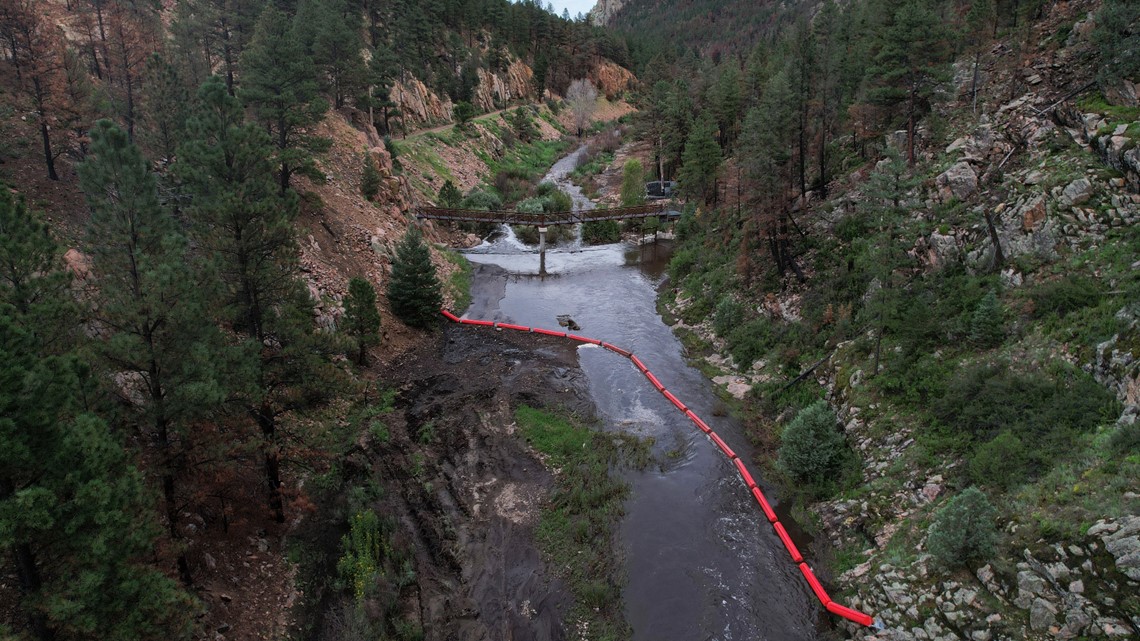
Trujillo said the community is no stranger to watering restrictions as drought has long been part of life in northern New Mexico. He and other residents have become experts at using just half the water of the average American, or about 44 gallons.
“So asking the citizens to do even more is quite an imposition. It's very hard,” said Trujillo, as he prepared for federal emergency managers to arrive with another truckload of bottled water for distribution to community members.
Utility managers have been unable to tap into their usual source — the Gallinas River — since it has been choked by ash and debris.

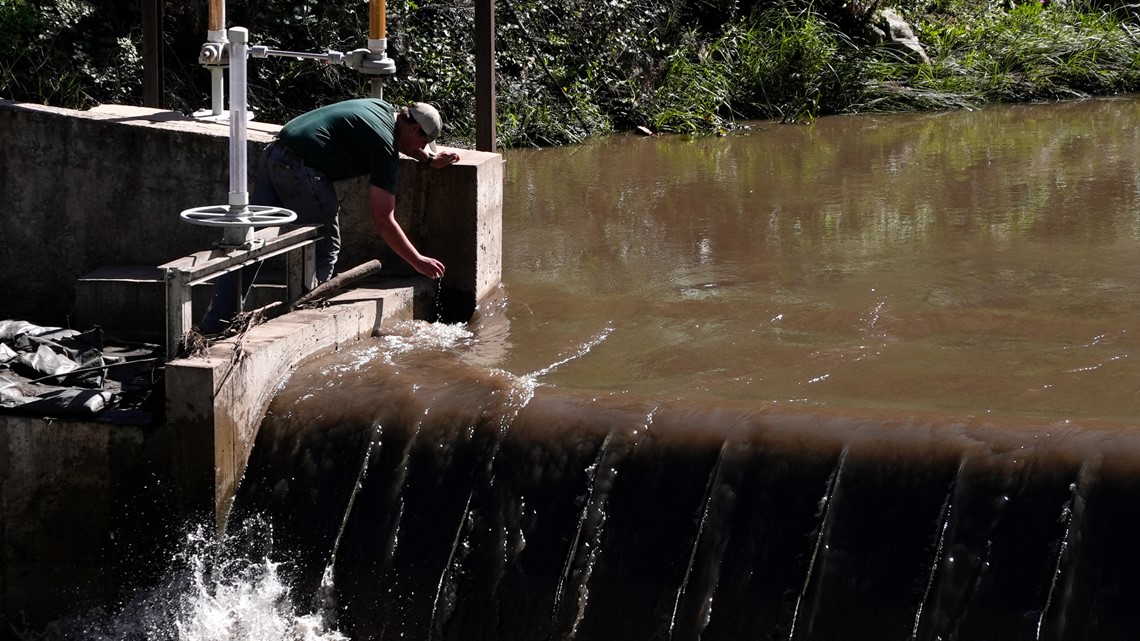
Trujillo declared an emergency in late July and New Mexico's governor followed with her own declaration, freeing up funding to help pay for the installation of a temporary treatment system that will allow for water from a nearby lake to be used to supplement supplies.
City officials expect that system to be installed next week. It will be capable of treating about 1.5 millions gallons a day, about what the city consumes daily. But it's only a Band-Aid, Trujillo said.
Like other western cities, Las Vegas is in search of alternative sources of water as nearby rivers and reservoirs shrink amid hotter, drier conditions. The wildfire complicates matters.

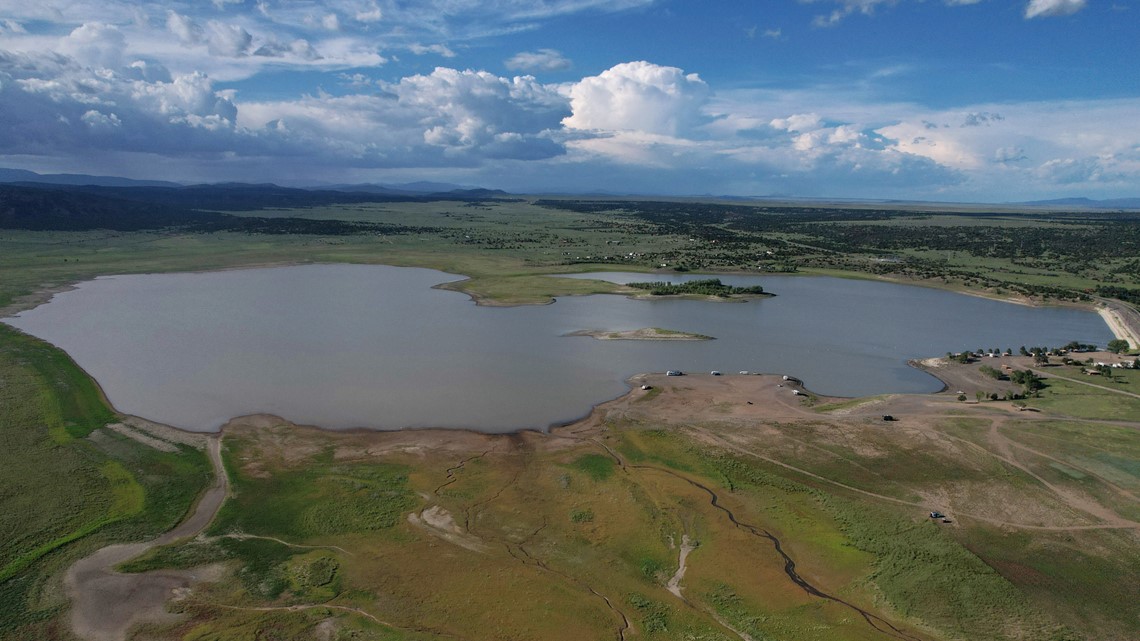
New Mexico's largest city, for example, was forced to stop pulling water from the Rio Grande this year as it dried up within Albuquerque city limits for the first time in decades. And for the second year in a row, Arizona and Nevada will face cuts in the amount of water they can draw from the Colorado River as the western drought becomes more acute.
Las Vegas is hoping the temporary treatment system will slow down the ticking clock as crews continue work upstream to keep more ash, debris and sediment from clogging the Gallinas River that feeds the city's reservoirs.
Trujillo said a permanent treatment system on the river could cost more than $100 million, far beyond the city's means. There's no timetable for designing or building such a system.

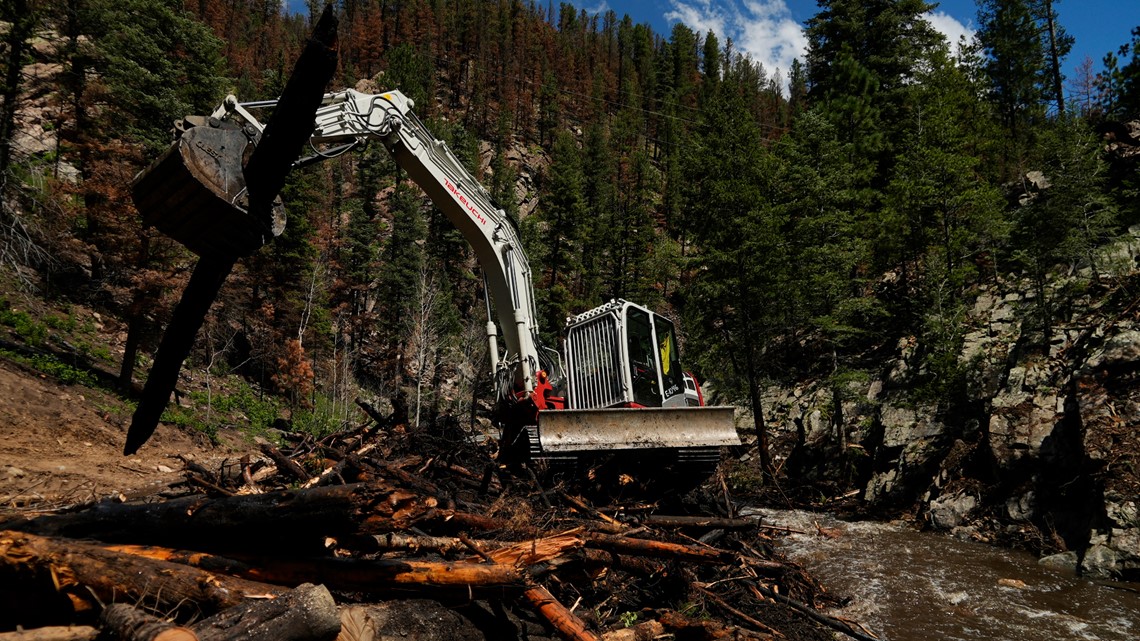
What is heartbreaking for the mayor is that the region is experiencing one of the best monsoon seasons in several years. Had it not been for the fire and the contamination, the city would have been able to capture the storm runoff pulsing through the river and bolster its reservoirs for the future as drought persists.
For Trujillo, his neighbors, the governor and members of Congress, the blame for the current water crisis falls squarely on the federal government.
“We’re going to continue to hold them responsible and expect them to pay for all of the improvements that we’re going to have to make,” the mayor said.
Daniel Patterson, a resource adviser with the U.S. Forest Service, called it an all-hands-on-deck approach as the agency works with local officials to protect the watershed that supplies Las Vegas. He acknowledged the Forest Service’s responsibility to restore the watershed as well as people’s access to their private property and traditional practices like gathering firewood from the forest.
“Those are all top priorities right now,” he said. “But it’s a heavy lift and it’s a long haul.”
President Joe Biden flew over the burn scar during a quick visit in June, promising the federal government would step up. Still, many residents feel abandoned.
Danny Lopez, who owns a ranch just outside of Las Vegas, called the past few months a nightmare. The fire charred nearly one square mile of land where he used to graze his cattle. His fences burned and the roof of his home was singed, damage now worsened by the summer rains.
His alfalfa fields have been compromised by the mud, ash and debris rolling off the surrounding hillsides. And with electricity cut off for months, he and his neighbors lost everything they had stockpiled in their fridges and freezers.
His request for aid from FEMA is tangled in red tape, with federal officials requiring something that simply does not exist for many rural properties — a street address.


“They don’t understand the devastation,” said Lopez, who has been forced to reduce his herd by half. “They don’t know how the people live here and how they get by here.”
Charlie Sandoval is the owner of Charlie’s Bakery Café in downtown Las Vegas. It has served as a gathering spot for the community and travelers for decades, made famous by its homemade chile recipes, fresh tortillas and cinnamon rolls.
It takes as much as 13 gallons of water to make one big batch of chile. Then there's the water needed for the tortillas and the dough for the pastries.
“Everything that we do just takes water,” Sandoval said. “And it just really scares me. What would happen if we run out of water, you know?”
The bakery is using more plastic and paper items to cut down on dishwashing. But supplies are expensive, and the bottom line is taking a hit.
If more restrictions are imposed, Sandoval worries about how long he can keep the bakery open and what that might mean for his employees.

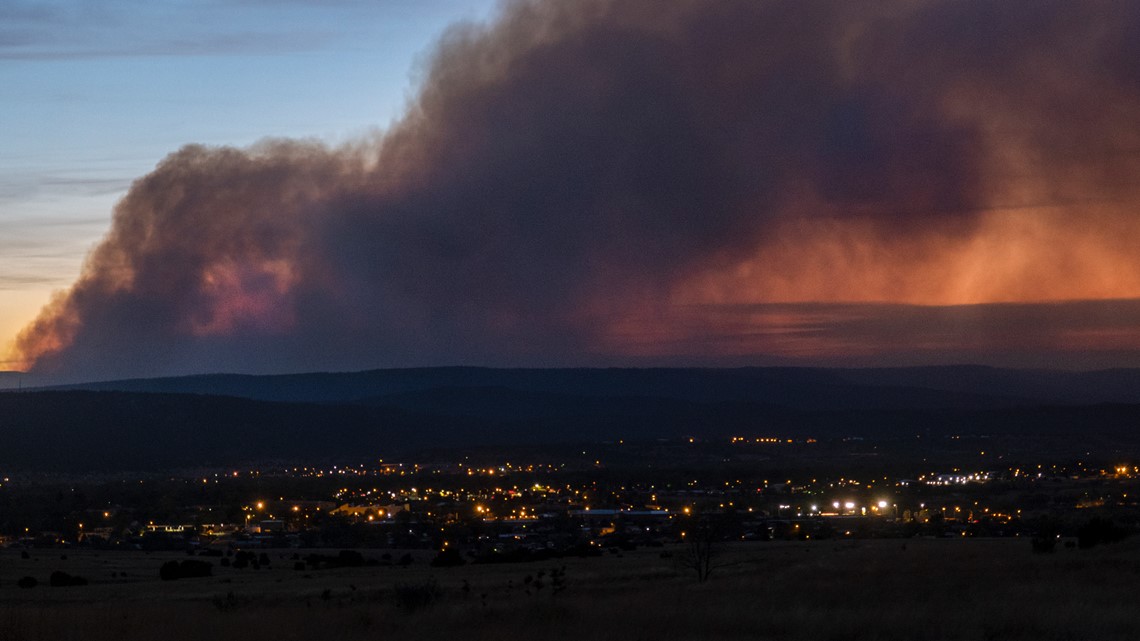
At the end of July, the city implemented Stage 6 restrictions, meaning no more outdoor watering, no refilling of swimming pools, restaurants cannot serve water to customers unless requested, and no new water accounts can be activated.
For City Manager Maestas, it's been a sleepless month. More than once he's jumped into his pickup in the middle of the night and rushed down to check on a diversion point along the Gallinas River. Standing there, he stares down an impossible decision: If the contaminated river rises fast enough post-monsoon, will he direct the flow into town and flood homes? Or will he further pollute the city's back-up drinking water supply?
Fear, sadness and then anxiety set in. He wants to make the right decision.
"No city official or government official should ever be put in that predicament,” he said.

